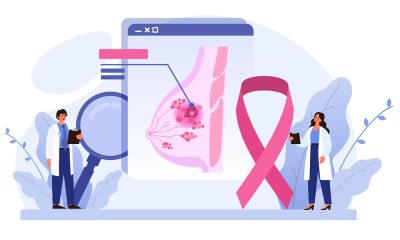Entrepreneur
Why the #empowHER50 Campaign is a Call to Action to Democratize AI for All

By Chaitra Vedullapalli, Co-Founder, Women in Cloud
As Microsoft marks its 50th anniversary—celebrating five decades of innovation, leadership, and global impact—it’s a powerful moment to honor the people who helped shape the digital economy. Behind Microsoft’s trillion-dollar market shift are not only visionary founders and technologists, but also women whose contributions boldly transformed the world.
For over five decades, women at Microsoft—past and present—have been pioneers, expanding access, scaling innovation, and redefining what’s possible. Leaders like Nathalie D’Hers, Jacky Wright, Amy Hood, Sumit Chauhan, Joy Chik, Gavriella Schuster, Julia White, Dawn Trudeau, Trish Millines Dziko, and Kate Behncken embody the spirit of resilience, inclusion, and purpose that powers Microsoft’s enduring impact.
As we step into the next era of transformation, we rise as a united global force to democratize access, inspire future generations, and prepare women to lead in AI and next-generation technologies. Our collective legacy is a call to action to build a more inclusive, empowered, and prosperous digital economy for all.
That’s why today, with heartfelt gratitude, the Women in Cloud ecosystem is turning the spotlight on these extraordinary women. Through our #empowHER50 campaign, we proudly honor over fifty exceptional leaders who have helped power Microsoft’s trillion-dollar market shift and built the digital infrastructure driving today’s global economy. These women have democratized access to technology, created economic opportunities, and opened doors for millions. Today, we celebrate their impact, amplify their stories, and express our deepest appreciation for shaping a more inclusive and empowered future for all.
Their stories show that when women lead in tech, everyone gains.
Four Stories That Will Change How You See the Future
Here are powerful stories from the #empowHER50 honorees that will move you—and show how women have been instrumental in powering Microsoft’s trillion-dollar shift and democratizing computing access.
Yanna Andronopoulou: Building AI Access Across Europe

In Southeast Europe, Yanna Andronopoulou has been quietly leading a movement to bridge the digital divide. As Microsoft’s General Manager for Greece, Cyprus, Malta, and sponsor of Women Employee Resource Group (ERG), she launched the Women’s AI Hackathon across nine countries, attracting over 900 applicants and equipping 100 women with AI skills to shape the digital future in their communities. Her leadership extended beyond events—Yanna drove Greece’s largest AI skills program, AI School 360, ensuring 50% female participation, and partnered with local organizations to upskill 4,000+ women with digital literacy and career opportunities. Her work earned Microsoft Greece the Inclusivity Award and recognition as an international advocate for equity in tech.
“Together, we can ignite change and shape a future where women not only thrive but lead in technology,” Yanna reminds us.”
Gavriella Schuster: Architecting Allyship and Access

Gavriella Schuster is a force behind the structural shifts that expanded access for women in technology. As a Corporate Vice President at Microsoft, she not only transformed the company’s partner ecosystem but also became a global advocate for inclusion. Gavriella sponsored the creation of The WIT Network, now spanning 11,000+ members across 76 countries, providing mentorship and technical certifications to women in tech. She co-founded Women in Cloud, helping over 120,000 women access economic opportunities and cloud marketplaces.
Beyond corporate leadership, Gavriella has personally mentored over 100 women, launched mentorship rings, and delivered a TEDx talk calling for 8 million women to enter tech. She developed allyship training programs now used by Fortune 500 leaders to create inclusive cultures.
“If a person who is an ONLY in any group has an ally, they are not alone, #ALLIES step up in the moments that matter through the little acts they practice every day to turn moments of exclusion into moments of inclusion. ” Gavriella says—a message that has fueled a global movement.“
Jenny Lay-Flurrie: Making Technology Accessible for 1.3 Billion People

Jenny Lay-Flurrie’s story is a masterclass in how technology can be truly inclusive. As Microsoft’s Chief Accessibility Officer (CAO), Jenny leads one of the world’s most comprehensive accessibility initiatives, designed to empower the 1.3 billion people with disabilities worldwide.
Accessibility at Microsoft began in 1995 with Windows 95, but under Jenny’s leadership since 2016, it became an all-company movement. She helped embed accessibility training into the culture, reaching over 5 million people globally, ensuring every Microsoft employee knows how to create inclusive experiences.
From launching products like Read Aloud, Immersive Reader, Windows Captions, and Eye Control—used by millions monthly—to pioneering innovations like the Xbox Adaptive Controller, Jenny and her team have made it clear that accessible technology benefits everyone. She also championed hiring initiatives such as the Neurodiversity Hiring Program and led Microsoft’s Ability Summit, which grew from 20 attendees to over 20,000 participants in 2025.
“Accessibility makes technology easier for everyone,” Jenny says. Her work is proof that inclusive design isn’t optional; it’s essential.”
Melissa Mulholland: Turning Personal Adversity Into Industry Impact

For Melissa Mulholland, technology and impact are inseparable. While at Microsoft, she confronted a life-altering moment when her unborn son was diagnosed with a rare and life-threatening condition. That experience reshaped her perspective on how AI could be used to improve healthcare outcomes.
As Director of Business Strategy at Microsoft, she began advocating for the responsible use of AI in patient care. Today, as CEO of Crayon, she leads efforts to apply AI in healthcare at scale, including partnerships with Oslo University Hospital to enhance cancer screening and real-time patient monitoring.
Mulholland’s story illustrates how personal experience can sharpen a leader’s vision—and how technology, when grounded in purpose, can drive lasting change.
The Power of Collective: Women in Cloud’s Impact
The #empowHER50 campaign is part of a broader movement to democratize economic access for women in technology. At Women in Cloud, we have built a global platform to remove barriers and create pathways to opportunity. Over the past five years:
- Generated $500M+ in economic impact, supporting 120,000+ members worldwide.
- Empowered 5,000+ women in 80+ countries with Microsoft AI and cybersecurity certifications, accelerating their careers in DevSecOps.
- Engaged 4 million+ individuals globally through 300+ events and 32 industry partnerships, including setting a Guinness World Record for the largest vision board video hangout.
- Launched the empowHERaccess Prestige Awards, recognizing 2,500+ women, allies, and organizations driving inclusive innovation.
- Received formal recognition through Washington Senate Resolution 8621, honoring Women in Cloud’s role in inspiring women and girls in technology.
We believe that access to technology is access to opportunity, and when we invest in women, we invest in the future.
A Historic Celebration: Honoring the Women Who Powered Microsoft’s Trillion-Dollar Shift
As Microsoft marks its 50th anniversary, it’s time to recognize the women whose innovation, leadership, and vision helped shape the digital economy. The #empowHER50 campaign highlights those who expanded access, built critical infrastructure, and helped drive Microsoft’s trillion-dollar market shift—women who changed the trajectory of technology for billions.
Their contributions underscore a clear truth: inclusion is not optional—it’s a competitive advantage. The next trillion-dollar shift in tech will be defined by who builds it.
Join us on July 18, 2025, at the empowHERaccess Awards and Recognition Gala to celebrate the women who helped shape Microsoft and the global tech industry—and connect with those building what’s next.
Their stories shaped our present. Your presence will shape the future.
Features
IVF innovation: What you need to know about global regulatory pathways in 2025

By Juan A. Jiménez, founder and CEO, FindDBest IVF
In the fast-moving world of fertility innovation, building a game-changing medical device or diagnostic is only half the journey.
The other half? Getting it approved — and into the hands of those who need it.
At FinDBest IVF, we work with IVF and ART (Assisted Reproductive Technology) device manufacturers around the world to help them navigate local regulations, identify distributors, and accelerate global expansion.
Over the past few months, we’ve been breaking down country-by-country regulatory updates in a series of accessible articles.
If you’ve missed them, don’t worry.
Here’s a quick, plain-language roundup of what’s new (and what’s changing) in the major regions IVF innovators are targeting in 2025 — from the United States and Europe to Brazil, China, the Middle East, and beyond.
United States – Getting Smarter with AI and Safer with UDI
The U.S. Food and Drug Administration (FDA) remains a global gold standard. But in 2025, two updates stand out:
- Quality System Alignment: The FDA has officially aligned its quality system with ISO 13485:2016 — a widely accepted international standard. This change means U.S. and European manufacturers now speak a more “common language” when it comes to quality documentation.
- AI Oversight & UDI: The FDA’s Digital Health division now requires AI-based software (like embryo scoring tools) to include performance monitoring and retraining protocols. Also, UDI (Unique Device Identifier) submission to the FDA’s database is mandatory for traceability. This affects any embryo kit, lab platform, or culture system sold in the U.S.
Tip: If you’re developing AI software for embryo selection or any connected device, plan early for post-market data collection and ongoing validation.
China – Stricter for AI, but More Open to Global Data
China’s regulator, the National Medical Products Administration (NMPA), has doubled down on innovation — and caution.
In 2025:
- AI-powered devices are increasingly treated as Class III — the highest-risk category — especially if they influence embryo transfer decisions.
- However, NMPA now accepts overseas clinical data in some cases (if the population data is relevant), reducing the need for local trials.
Also, connected IVF devices must now integrate with China’s UDI cloud system, and submit a cybersecurity risk report as part of the approval process.
Tip: Get local regulatory advice early — and expect your AI device to be subject to the most rigorous pathway.
European Union – CE Marking Under the MDR
Europe’s Medical Device Regulation (MDR) is in full effect, and IVF-related products like culture media, incubators, embryo transfer catheters, and AI software fall under tighter scrutiny than in the past.
What’s new:
- Classifications are stricter — many IVF consumables are now Class IIb or even Class III.
- UDI and post-market reporting are mandatory.
- Software (SaMD) requires usability testing, transparency around algorithms, and cybersecurity protection.
The CE Mark still unlocks the entire European market — but earning it now takes more time, documentation, and risk management.
Tip: Plan for at least 6–12 months to get through CE marking, depending on your device class.
ASEAN – Harmonized in Theory, Fragmented in Practice

Juan A. Jiménez
The Association of Southeast Asian Nations (ASEAN) introduced the AMDD (ASEAN Medical Device Directive) to harmonize device registration — but the reality is still very country-specific.
- Each country requires separate approval, despite using the same CSDT (Common Submission Dossier Template).
- Some markets (like Singapore and Malaysia) are faster and more tech-driven.
- Others (like Indonesia or Vietnam) still require local clinical data or language-specific labeling.
Tip: Use a single ASEAN-friendly dossier and localise as needed. Don’t assume one approval unlocks all 10 markets.
Latin America – Patchwork of Rules, Rising Demand
IVF demand is rising across Brazil, Mexico, Colombia, and Argentina, but regulations vary widely:
- Brazil (ANVISA): Class III/IV devices need a local GMP certificate and may face long timelines (9–18 months).
- Mexico: Recognizes CE/FDA under its “Equivalency Pathway,” which can fast-track approvals.
- Colombia and Argentina: Local sponsor/distributor is mandatory, and digital portals are evolving.
Also, Brazil and Mexico both require product documentation in Portuguese or Spanish, and some devices must comply with local technical standards.
Tip: A smart local partner who knows the IVF space is the fastest path to compliance.
Middle East – Local Sponsors + UDI = Mandatory
Key IVF markets in the Middle East — including Saudi Arabia, UAE, Egypt, Jordan, and Qatar — continue to grow. However, nearly all require:
- A local “Authorized Representative” (AR) or license holder
- UDI labeling (especially in Saudi Arabia under the Saudi-DI program)
- In some cases, bilingual labeling (Arabic + English)
Some authorities, like the UAE’s MOHAP, offer relatively quick review times (~45 working days), while others (e.g. Egypt or Bahrain) are tightening post-market requirements and traceability rules.
Tip: Don’t underestimate the value of an experienced local sponsor — they often control the registration certificate.
Australia & New Zealand – Gold Standard and Gateway
Australia’s Therapeutic Goods Administration (TGA) is globally respected. In 2025:
- UDI is mandatory starting July 2026 for higher-risk devices.
- AI software is regulated under SaMD (Software as a Medical Device) rules.
- Post-market vigilance requirements are increasing, with hospital-level reporting becoming mandatory in 2026.
New Zealand, meanwhile, repealed its planned regulatory overhaul. That means the WAND system — which only requires notification, not approval — continues for now.
Tip: Use Australia for your “gold standard” approval; use New Zealand for speed-to-market.
What This Means for You
Whether you’re developing AI-based software, culture media, cryopreservation devices, or genetic diagnostics — regulatory strategy is now core to your go-to-market plan.
The good news? There are clear pathways. The not-so-good news? They’re all a little different.
That’s where FinDBest IVF comes in.
We help medical device manufacturers:
- Find local regulatory-savvy distributors or license holders
- That understand country-specific timelines and dossier formats
- Stay ahead of new UDI, SaMD, and post-market changes
- Expand globally, faster — with fewer surprises
Want to connect with IVF-focused partners in any of these regions?
Email us at [email protected] or visit www.findbestivf.com
News
UCL spin-out raises £2.5m to improve infant health with breast milk microbiome

London-based biotechnology company BoobyBiome has raised £2.5m in seed funding for its infant feeding solutions.
The funding round was led by specialist deep tech investor Empirical Ventures, alongside The Helm, XFactor Ventures, Lavender Ventures, Kayan Ventures, and Evenlode Investment, with influential angels including Dominic Hollamby, Lord Ara Darzi, Yael Cohen, Vanessa Colomar, and others.
Founded in 2019 by a team of female scientists-turned-entrepreneurs, the company plans to tackle the rising rates of infant health issues by harnessing the breast milk microbiome.
Dr Lydia Mapstone, Chief Executive Officer, BoobyBiome, said: “This funding marks a major milestone in our mission to revolutionise infant feeding and ensure every baby has equal access to a healthy future.
“It represents five years of dedication to understanding breast milk and harnessing its power for infant health.”
The prevalence of infant health issues linked to inadequate microbiome development, such as food allergies, asthma, type 1 diabetes, and obesity, is continuing to rise.
The breast milk microbiome – a diverse blend of beneficial bacteria found in human milk – plays a crucial role in strengthening infant immune defences against these diseases.
While breastfeeding offers well-established health benefits, it can sometimes be challenging due to a range of medical, physical, or personal factors, meaning not all families are able to exclusively breastfeed.
BoobyBiome has set out to redress this disparity in infant feeding.
Based on over five years of research at the UCL Great Ormond Street Institute of Child Health, it has created the world’s largest high-resolution breast milk microbiome database.
BoobyBiome has also produced a biobank of proprietary strains, capturing the diversity of beneficial bacteria found in human milk samples.
This has enabled the identification, characterisation, and preservation of strains critical for infant gut and immune development.
This latest funding will advance the commercial launch of BoobyBiome’s proprietary storage device, including partnerships with global infant bottle companies.
It will also enable the ongoing research and development of its live microbiome drop and the expansion of BoobyBiome’s commercial team as it scales internationally.
Dr Sioned Jones, Chief Operating Officer, BoobyBiome, said: “In closing this gap, we also aim to reduce the stigma often faced by parents who, for many reasons, cannot breastfeed.
“This support will allow us to advance our research, bring our live microbiome drops closer to market, and deliver meaningful improvements to infant health worldwide.”
Dr Tara O’Driscoll, Chief Technology Officer, BoobyBiome, said: “We founded BoobyBiome in response to rising infant diseases linked to low breastfeeding rates and underdeveloped microbiomes.
“Like many issues in infant health, it remains under-researched and under-funded, and we hope our work helps drive greater investment into this vital field.”
Dr Ben Miles, Co-Founder and General Partner, Empirical Ventures, said: “We’re proud to support the brilliant team at BoobyBiome as they advance their research and bring their groundbreaking technology to market.
“Lydia, Sioned, and Tara’s combined expertise makes them exceptionally well placed to transform infant health, and their work addresses a critical gap that has been overlooked for too long.
“At Empirical Ventures, we believe entrepreneurial scientists like the BoobyBiome team are uniquely capable of driving real, positive change in the world.
“We’re excited to back their journey and to see the impact this innovation will have on families everywhere.”
Diagnosis
Escala Medical raises US$4.5m for prolapse device

Escala Medical has secured US$4.5m in Series A funding to expand use of its FDA-cleared device for pelvic organ prolapse, bringing total funding to over US$8m.
Proceeds from the funding round will support commercial expansion in the US, market entry in Europe following anticipated CE mark approval in 2026, and rollout in Southeast Asia via a newly signed distribution agreement with a Singapore-based partner.
The Mendit device offers a non-surgical, office-based treatment for pelvic organ prolapse (POP) – where pelvic organs drop from their usual position – a condition affecting nearly 50 per cent of women over 40.
FDA clearance was granted in April 2023. Since then, the device has been used in over 500 procedures. Commercial launch in the US began in October 2023 and it is now approved in 48 hospitals, including several major health systems.
Dr Edit Goldberg, chief executive of Escala, said: “This funding marks an important milestone as we continue to scale our operations and bring our breakthrough technology to more women worldwide.
“We’re proud to have the support of the EIB and our private investors, and we remain committed to advancing the next generation of our Mendit device to improve outcomes and expand access to millions of women worldwide who suffer from organ prolapse.”
The round was co-financed by the European Innovation Council (EIC) Fund, following a €2.5m grant awarded to Escala in October 2023 through its Accelerator programme.
Private investors from the US and Israel also took part.
Previous backers include The Trendlines Group, UK-based Consensus Business Group (CBG), and other private investors.
Escala was founded in 2014 by pelvic surgeons Dr Roger Goldberg and Professor Douglas Scherr to address what they identified as a major treatment gap.
While nearly 50 per cent of women over 40 experience POP, only around 10 per cent undergo surgery due to risk and recovery concerns.
Goldberg said: “The device offers a minimally invasive, office-based alternative to traditional surgery, combining surgical-grade effectiveness with unmatched versatility.
“As the first truly minimally invasive, reversible anchor-based system, Mendit opens the door to treatment for the 90 per cent of women who currently go without care.”
The global POP treatment market is valued at over US$7bn, with more than 8 million women seeking care annually in the US and Europe.
Procedures are typically carried out by gynaecologists, urogynaecologists and urologists in hospitals, ambulatory surgery centres and private clinics.
Competing products include suture passers and other anchor-based systems such as EnPlace, AnchorSure and Saffron.
Goldberg said these require incisions and operating rooms, while Mendit offers incision-free, reversible repair in an office setting.

 News4 days ago
News4 days agoScientists turn human skin cells into eggs in IVF breakthrough

 Menopause5 days ago
Menopause5 days agoFDA plans to revise black box warning on menopause hormone therapies

 News5 days ago
News5 days agoDaily pill could delay menopause ‘by years,’ study finds

 News4 days ago
News4 days agoMothers’, not fathers’, mental health directly linked to their children’s, study shows

 News3 days ago
News3 days agoManagers still unprepared to discuss menstrual health, study finds

 News1 day ago
News1 day agoAI-powered women’s health companion Nexus launches in UK

 Opinion3 days ago
Opinion3 days agoAncient herb to modern must-have: Why ashwagandha is capturing UK women’s attention

 Opinion3 days ago
Opinion3 days agoDrug improves survival in triple-negative breast cancer




















